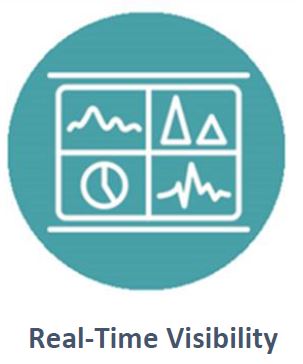Relevance Regained With Sage Intacct “Statistical Accounts”
June 3, 2020 | Authored by Dopkins Client Accounting & Advisory Solution (CAAS) Team
Published June 4, 2020 – In the latest post from Dopkins Client Accounting & Advisory Solution (CAAS) team, we take a historical look at the accounting profession’s role in recovery during prior periods of economic turbulence. As we fast-forward to today, new technological advances are offering solutions with access to real-time data, providing business leaders with a competitive advantage to overcome challenges and have a better picture of the organization’s financial standing.
 During the early years of the Industrial Revolution, well before the stock market crash of 1929, the Great Depression and the ensuing creation of Generally Accepted Accounting Principles, (GAAP for short), management accountants and their crude accounting systems were key to the success of the businesses by which they were employed. The accounting and reporting systems were often specifically designed for the industry, and certainly for the companies that utilized them. Now to be clear, we are not talking about “cooking the books” here. Rather custom accounting systems that provided accurate and timely information to management that allowed for good, reasoned decision making.
During the early years of the Industrial Revolution, well before the stock market crash of 1929, the Great Depression and the ensuing creation of Generally Accepted Accounting Principles, (GAAP for short), management accountants and their crude accounting systems were key to the success of the businesses by which they were employed. The accounting and reporting systems were often specifically designed for the industry, and certainly for the companies that utilized them. Now to be clear, we are not talking about “cooking the books” here. Rather custom accounting systems that provided accurate and timely information to management that allowed for good, reasoned decision making.
All that changed with legislation such as the Securities Act of 1933 and the Securities Exchange Act of 1934. GAAP, appropriately so, established standards, rules, and practices to help ensure consistent and accurate financial reporting. Finally, external users of financial statements such as investors and creditors could rely on the information being reported, a welcomed change from the less than forthright practices that in partial led to the stock market crash of 1929 and the resulting Great Depression.
But as the saying goes, “you don’t get something for nothing”. With attaining the consistency and reliability of financial information for external users, management, i.e. the internal users of that same information, was suddenly lost. The reason – GAAP standards such as inventory capitalization and overhead allocation often led to bad decision making. In 1991, Johnson and Kaplan captured this notion in their widely successful book entitled “Relevance Lost: The Rise and Fall of Managerial Accounting” As a result, management learned to rely upon “bootleg” reporting systems to provide them with the relevant information to run their businesses that the accounting system typically could not provide. The process typically involved manually combining financial and non-financial data into complex spreadsheets. Clumsy for sure, timely, not so much, and accurate, well they could only hope so.
Enter ERP systems such as Sage Intacct. Today, as a result of the computing and storage power of cloud-based accounting, financial information from the general ledger can be instantly combined with non-financial data yielding real time dashboards and metrics measuring what is really going on in your business. “Statistical Accounts” to which they are referred, store non-financial data such as employee headcount, square footage, sales rep, sales region, employee hours, and much, much more. Combined with financial data, Intacct automatically generates metrics such as cost to serve per customer, process waste per department, or profitability by sales region to name a few. These metrics as most are aware, are hugely valuable as they are process-based, leading indicators to what the financial statements only lag in reporting.
To learn more about the reporting power of using statistical accounts with your general ledger information, please feel free to contact one of our certified Accounting Specialists; we would welcome the opportunity to help you recapture the relevance in your accounting system!
About the Author
Dopkins Client Accounting & Advisory Solution (CAAS) Team
Dopkins Client Accounting & Advisory Solution (CAAS) is centered on helping our clients transform the accounting and finance function of their businesses to more effectively confront challenges and seize opportunities in four critical areas: Talent, Resources, Risk and Counsel. For more information, contact Albert A. Nigro, CPA, CVA at anigro@dopkins.com.

